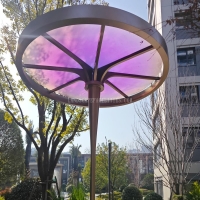Welcome to the website for landscape facilities products and knowledge.
What are the most important factors to consider when selecting the base or support structure?
When embarking on any construction project, the selection of an appropriate base or support structure represents one of the most critical decisions that will determine the long-term success and safety of the entire endeavor. The foundation serves as the fundamental interface between the structure and the ground, transferring all loads effectively while ensuring stability throughout the project's lifespan. Several interconnected factors demand careful consideration during this selection process.
First and foremost, comprehensive soil analysis provides indispensable information for foundation design. The bearing capacity, composition, and behavior of the underlying soil must be thoroughly investigated through geotechnical surveys. Different soil types—from stable bedrock to expansive clay or loose sand—require fundamentally different support solutions. The water table level and potential for soil erosion or liquefaction during seismic events further complicate this assessment and directly influence the chosen approach.
The nature and magnitude of anticipated loads represent another pivotal consideration. Structures must be designed to support both dead loads (the permanent weight of the building itself) and live loads (temporary forces from occupants, furniture, and equipment). Additionally, environmental loads such as wind pressure, snow accumulation, and seismic activity must be factored into calculations. The distribution of these loads—whether concentrated at specific points or spread evenly—will determine whether isolated footings, mat foundations, or deep pile systems prove most appropriate.
Material selection for the support structure introduces another layer of decision-making. Traditional options include poured concrete, reinforced concrete, structural steel, and treated timber, each offering distinct advantages in terms of cost, durability, and construction methodology. The compatibility between foundation materials and soil chemistry must be verified to prevent premature deterioration through corrosion or chemical reaction. Modern construction increasingly incorporates innovative materials and composite systems that enhance performance while reducing environmental impact.
Environmental conditions and sustainability concerns have rightfully gained prominence in foundation selection. The structure's interaction with its surroundings—including potential effects on adjacent buildings, water drainage patterns, and local ecosystems—requires careful evaluation. Furthermore, the embodied energy of foundation materials and the long-term environmental footprint of the chosen system are now legitimate considerations in responsible project planning.
Finally, the temporal dimension cannot be overlooked. The intended lifespan of the structure dictates the necessary durability of its foundation. Considerations about future maintenance requirements, potential for expansion or modification, and resilience against gradual environmental changes all inform the selection process. A support structure that appears economically advantageous initially may prove costly if it requires frequent maintenance or premature replacement.
The interplay between these factors—soil mechanics, load characteristics, material properties, environmental context, and temporal requirements—creates a complex decision matrix that demands specialized expertise. There exists no universal solution; each project presents unique challenges that necessitate a tailored approach to foundation selection. By systematically addressing these considerations during the planning phase, engineers and architects can ensure the structural integrity, safety, and longevity of their constructions while optimizing resource allocation and minimizing future complications.
Related search:

Recommendation
Metal frame with gradient color acrylic combined with high-end shading landscape facilities